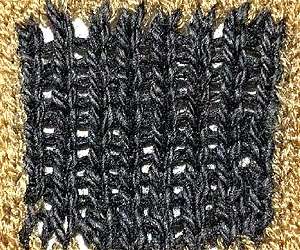New device enables battery-free computer input at the tip of your
Computer scientists at the University of Waterloo have created a device for wearable computer input suitable for many situations, just by touching your fingertips together in different ways.
The device, called Tip-Tap, is inexpensive and battery-free through the use of radio frequency identification (RFID) tags to sense when fingertips touch. The device could, therefore, be added to disposable surgical gloves, allowing surgeons to access preoperative planning diagrams in an operating room.
“One of the many possible applications of the device is in surgeries. What typically happens now with operation digital preplanning is that an assistant is responsible for navigating the computer and communicating with the surgeon, but this is slow and difficult”, said Daniel Vogel, a professor in Waterloo’s David R. Cheriton School of Computer Science.
“If the surgeon tries to navigate it themselves using a touchscreen or a mouse, it’s problematic because it would require constant sterilization, and current alternatives such as big gestures tracked by computer vision can get very tiring.
“The idea is if you mount Tip-Tap in surgical gloves, surgeons could navigate the computer themselves from where they are, and it won’t affect their other actions like picking up the scalpel.”
Researchers created the prototype of Tip-Tap as part of a new partnership with the National Research Council of Canada (NRC).
In developing the method, the researchers mapped the most comfortable areas on the index finger for people to touch with their thumb, and tested different designs for the input points, such as smooth, bumps, or magnets. Following user tests with an early “wired” prototype to benchmark performance, they tackled the problem of making it “battery-free.”
The researchers were able to make Tip-Tap battery-free by splitting the antenna of an RFID tag in two, and equipping each side with three chips to enable two-dimensions of fingertip input, the first time this had ever been done.
The new RFID tag can be integrated into a glove or attached directly on the skin as a temporary tattoo.
“We used this design in two prototype Tip-Tap devices, a glove with a range of four meters, and an on-skin tattoo,” said Vogel. “Such devices are useful for issuing simple commands when a user cannot easily hold an input device, and the usage context is a defined area – for example, factory workers, surgeons, or people exercising in a gym.
“This is the only device of its kind that we’re aware of that doesn’t require a battery or cumbersome wires to make it work.”
Related Links
University of Waterloo
Powering The World in the 21st Century at Energy-Daily.com
|
We need your help. The SpaceDaily news network continues to grow but revenues have never been harder to maintain. With the rise of Ad Blockers, and Facebook – our traditional revenue sources via quality network advertising continues to decline. And unlike so many other news sites, we don’t have a paywall – with those annoying usernames and passwords. Our news coverage takes time and effort to publish 365 days a year. If you find our news sites informative and useful then please consider becoming a regular supporter or for now make a one off contribution. |
||
|
SpaceDaily Monthly Supporter $5+ Billed Monthly |
SpaceDaily Contributor $5+ Billed Once |
|

![]()
Big plans to save the planet depend on nanoscopic materials improving energy storage
Philadelphia PA (SPX) Nov 25, 2019
The challenge of building an energy future that preserves and improves the planet is a massive undertaking. But it all hinges on the charged particles moving through invisibly small materials.
Scientists and politicians have recognized the need for an urgent and substantial shift in the world’s mechanisms of energy production and consumption in order to arrest its momentum toward environmental cataclysm. A course correction of this magnitude is certainly daunting, but a new report in the journal S … read more
